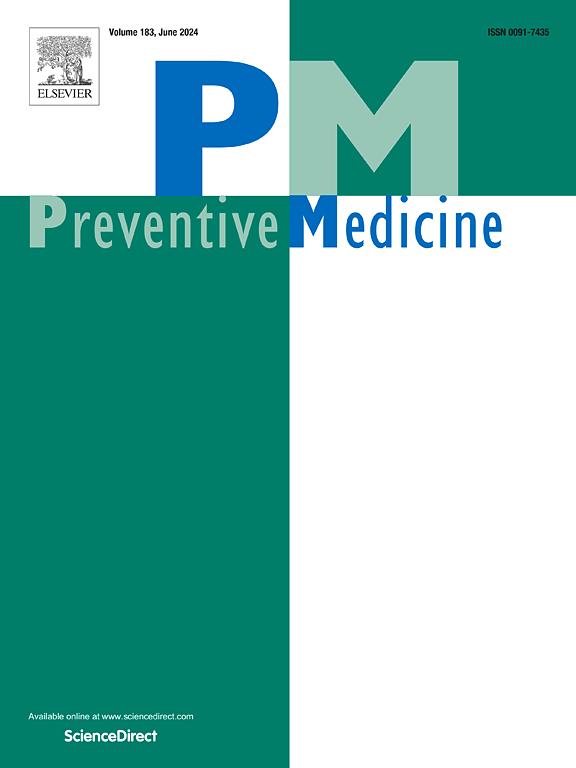Associations between behavior cognition–social influence and pregnancy planning behavior in China: An integrated individual-couple analysis
IF 3.2
2区 医学
Q1 MEDICINE, GENERAL & INTERNAL
引用次数: 0
Abstract
Objective
Pregnancy planning is a critical opportunity to enhance preconception health. “Beiyun,” a culturally rooted concept in China, encompasses traditional and modern practices for preparing for pregnancy. This study used the comprehensive idea of “Beiyun” to examine the mechanisms of pregnancy planning behavior among women and men through an integrated individual-couple analysis based on the Behavior Cognition – Social Influence Theory.
Methods
Using multistage stratified sampling, we recruited reproductive-aged individuals in Zhejiang, China between July and September 2023. A cross-sectional survey collected data on pregnancy planning behavior. Analyses were conducted at both individual (Study 1, all participants) and couple levels (Study 2, coupled participants) using path analysis, specifically employing the actor-partner interdependence model in Study 2.
Results
Study 1 included 1086 women and 905 men, with 57.6 % and 67.7 % reporting pregnancy planning, respectively. Study 2 comprised 458 heterosexual couples. At the individual level, perceived susceptibility (women: β = 0.09, p = 0.01; men: β = 0.09, p = 0.04) and behavioral norms (women: β = 0.37, p < 0.01; men: β = 0.45, p < 0.01) were significantly associated with planning behavior. Couple-level analysis revealed that women's pregnancy planning was associated with their perceived susceptibility (β = 0.13, p = 0.02), behavioral norms (β = 0.29, p < 0.01), and their partner's behavioral norms (β = 0.30, p < 0.01), while men's behavior was associated with their norms (β = 0.35, p < 0.01) and partner's perceived susceptibility (β = 0.13, p = 0.03).
Conclusions
This study yielded new insights into pregnancy planning behavior, highlighting the role of individual factors and partner dynamics. Future interventions should enhance risk awareness among women and shape behavioral norms in men, considering partner dynamics in public health campaigns.
行为认知-社会影响与中国怀孕计划行为的关系:一个综合的个体-夫妻分析
目的妊娠计划是提高孕前健康的重要机会。“备孕”是一个植根于中国文化的概念,包含了传统和现代的备孕做法。本研究以行为认知-社会影响理论为基础,运用“北云”的综合思想,通过个体-夫妻的综合分析,探讨男女计划生育行为的机制。方法采用多阶段分层抽样方法,于2023年7月至9月在中国浙江省招募育龄个体。一项横断面调查收集了有关怀孕计划行为的数据。使用通径分析在个体(研究1,所有参与者)和夫妻(研究2,耦合参与者)水平上进行了分析,特别是在研究2中采用了行动者-伴侣相互依赖模型。结果研究1纳入1086名女性和905名男性,分别有57.6%和67.7%的人有妊娠计划。研究2包括458对异性恋夫妇。在个体水平上,感知易感性(女性:β = 0.09, p = 0.01;男人:β= 0.09,p = 0.04)和行为规范(女性:β= 0.37,p & lt;0.01;男性:β = 0.45, p <;0.01)与计划行为显著相关。夫妻水平分析显示,女性的妊娠计划与其感知易感性(β = 0.13, p = 0.02)、行为规范(β = 0.29, p <;0.01),以及伴侣的行为规范(β = 0.30, p <;0.01),而男性的行为与他们的规范相关(β = 0.35, p <;0.01)和伴侣感知易感性(β = 0.13, p = 0.03)。结论本研究对怀孕计划行为有了新的认识,突出了个体因素和伴侣动态的作用。未来的干预措施应提高妇女的风险意识,并影响男子的行为规范,同时考虑到公共卫生运动中的伙伴动态。
本文章由计算机程序翻译,如有差异,请以英文原文为准。
求助全文
约1分钟内获得全文
求助全文
来源期刊

Preventive medicine
医学-公共卫生、环境卫生与职业卫生
CiteScore
7.70
自引率
3.90%
发文量
0
审稿时长
42 days
期刊介绍:
Founded in 1972 by Ernst Wynder, Preventive Medicine is an international scholarly journal that provides prompt publication of original articles on the science and practice of disease prevention, health promotion, and public health policymaking. Preventive Medicine aims to reward innovation. It will favor insightful observational studies, thoughtful explorations of health data, unsuspected new angles for existing hypotheses, robust randomized controlled trials, and impartial systematic reviews. Preventive Medicine''s ultimate goal is to publish research that will have an impact on the work of practitioners of disease prevention and health promotion, as well as of related disciplines.
 求助内容:
求助内容: 应助结果提醒方式:
应助结果提醒方式:


